#technological science
Text
To be fair, a lot of goofy-sounding rocketry/aerospace terminology has a legitimate nomenclatural role beyond just being silly euphemisms.
"Unplanned rapid disassembly", for example, exists as the necessary counterpart to planned rapid disassembly: sometimes a rocket is legitimately supposed to fall apart or blow up, so you need a specific term to emphasise that it wasn't supposed to do that.
Similarly, "lithobraking" was coined by analogy with aerobraking (shedding velocity via atmospheric friction) and hydrobraking (shedding velocity by landing in water), and it does have some intentional applications; the Mars Pathfinder probe, for example, was deliberately crashed into the Martian surface while surrounded by giant airbags, and reportedly bounced at least 15 times before coming to rest.
(That said, aerospace engineers absolutely do use these terms humorously as well, because engineers are just Like That.)
4K notes
·
View notes
Text
"There was an exchange on Twitter a while back where someone said, ‘What is artificial intelligence?' And someone else said, 'A poor choice of words in 1954'," he says. "And, you know, they’re right. I think that if we had chosen a different phrase for it, back in the '50s, we might have avoided a lot of the confusion that we're having now."
So if he had to invent a term, what would it be? His answer is instant: applied statistics. "It's genuinely amazing that...these sorts of things can be extracted from a statistical analysis of a large body of text," he says. But, in his view, that doesn't make the tools intelligent. Applied statistics is a far more precise descriptor, "but no one wants to use that term, because it's not as sexy".
'The machines we have now are not conscious', Lunch with the FT, Ted Chiang, by Madhumita Murgia, 3 June/4 June 2023
#quote#Ted Chiang#AI#artificial intelligence#technology#ChatGPT#Madhumita Murgia#intelligence#consciousness#sentience#scifi#science fiction#Chiang#statistics#applied statistics#terminology#language#digital#computers
20K notes
·
View notes
Text

What We Learned from Flying a Helicopter on Mars

The Ingenuity Mars Helicopter made history – not only as the first aircraft to perform powered, controlled flight on another world – but also for exceeding expectations, pushing the limits, and setting the stage for future NASA aerial exploration of other worlds.
Built as a technology demonstration designed to perform up to five experimental test flights over 30 days, Ingenuity performed flight operations from the Martian surface for almost three years. The helicopter ended its mission on Jan. 25, 2024, after sustaining damage to its rotor blades during its 72nd flight.
So, what did we learn from this small but mighty helicopter?
We can fly rotorcraft in the thin atmosphere of other planets.
Ingenuity proved that powered, controlled flight is possible on other worlds when it took to the Martian skies for the first time on April 19, 2021.
Flying on planets like Mars is no easy feat: The Red Planet has a significantly lower gravity – one-third that of Earth’s – and an extremely thin atmosphere, with only 1% the pressure at the surface compared to our planet. This means there are relatively few air molecules with which Ingenuity’s two 4-foot-wide (1.2-meter-wide) rotor blades can interact to achieve flight.
Ingenuity performed several flights dedicated to understanding key aerodynamic effects and how they interact with the structure and control system of the helicopter, providing us with a treasure-trove of data on how aircraft fly in the Martian atmosphere.
Now, we can use this knowledge to directly improve performance and reduce risk on future planetary aerial vehicles.

Creative solutions and “ingenuity” kept the helicopter flying longer than expected.
Over an extended mission that lasted for almost 1,000 Martian days (more than 33 times longer than originally planned), Ingenuity was upgraded with the ability to autonomously choose landing sites in treacherous terrain, dealt with a dead sensor, dusted itself off after dust storms, operated from 48 different airfields, performed three emergency landings, and survived a frigid Martian winter.
Fun fact: To keep costs low, the helicopter contained many off-the-shelf-commercial parts from the smartphone industry - parts that had never been tested in deep space. Those parts also surpassed expectations, proving durable throughout Ingenuity’s extended mission, and can inform future budget-conscious hardware solutions.

There is value in adding an aerial dimension to interplanetary surface missions.
Ingenuity traveled to Mars on the belly of the Perseverance rover, which served as the communications relay for Ingenuity and, therefore, was its constant companion. The helicopter also proved itself a helpful scout to the rover.
After its initial five flights in 2021, Ingenuity transitioned to an “operations demonstration,” serving as Perseverance’s eyes in the sky as it scouted science targets, potential rover routes, and inaccessible features, while also capturing stereo images for digital elevation maps.
Airborne assets like Ingenuity unlock a new dimension of exploration on Mars that we did not yet have – providing more pixels per meter of resolution for imaging than an orbiter and exploring locations a rover cannot reach.

Tech demos can pay off big time.
Ingenuity was flown as a technology demonstration payload on the Mars 2020 mission, and was a high risk, high reward, low-cost endeavor that paid off big. The data collected by the helicopter will be analyzed for years to come and will benefit future Mars and other planetary missions.
Just as the Sojourner rover led to the MER-class (Spirit and Opportunity) rovers, and the MSL-class (Curiosity and Perseverance) rovers, the team believes Ingenuity’s success will lead to future fleets of aircraft at Mars.
In general, NASA’s Technology Demonstration Missions test and advance new technologies, and then transition those capabilities to NASA missions, industry, and other government agencies. Chosen technologies are thoroughly ground- and flight-tested in relevant operating environments — reducing risks to future flight missions, gaining operational heritage and continuing NASA’s long history as a technological leader.
youtube
You can fall in love with robots on another planet.
Following in the tracks of beloved Martian rovers, the Ingenuity Mars Helicopter built up a worldwide fanbase. The Ingenuity team and public awaited every single flight with anticipation, awe, humor, and hope.
Check out #ThanksIngenuity on social media to see what’s been said about the helicopter’s accomplishments.
youtube
Learn more about Ingenuity’s accomplishments here. And make sure to follow us on Tumblr for your regular dose of space!
5K notes
·
View notes
Text
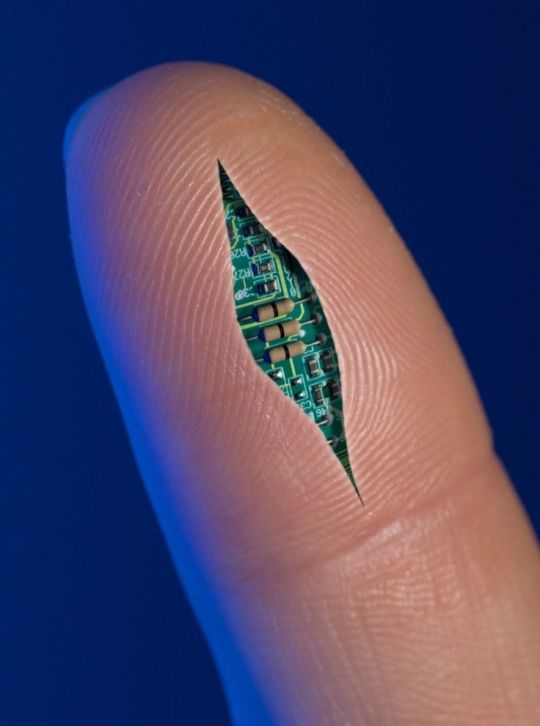
2K notes
·
View notes
Text
"A team of researchers at Washington University in St. Louis has developed a real-time air monitor that can detect any of the SARS-CoV-2 virus variants that are present in a room in about 5 minutes.
The proof-of-concept device was created by researchers from the McKelvey School of Engineering and the School of Medicine at Washington University...
The results are contained in a July 10 publication in Nature Communications that provides details about how the technology works.
The device holds promise as a breakthrough that - when commercially available - could be used in hospitals and health care facilities, schools, congregate living quarters, and other public places to help detect not only the SARS-CoV-2 virus, but other respiratory virus aerosol such as influenza and respiratory syncytial virus (RSV) as well.
“There is nothing at the moment that tells us how safe a room is,” Cirrito said, in the university’s news release. “If you are in a room with 100 people, you don’t want to find out five days later whether you could be sick or not. The idea with this device is that you can know essentially in real time, or every 5 minutes, if there is a live virus in the air.”
How It Works
The team combined expertise in biosensing with knowhow in designing instruments that measure the toxicity of air. The resulting device is an air sampler that operates based on what’s called “wet cyclone technology.” Air is sucked into the sampler at very high speeds and is then mixed centrifugally with a fluid containing a nanobody that recognizes the spike protein from the SARS-CoV-2 virus. That fluid, which lines the walls of the sampler, creates a surface vortex that traps the virus aerosols. The wet cyclone sampler has a pump that collects the fluid and sends it to the biosensor for detection of the virus using electrochemistry.
The success of the instrument is linked to the extremely high velocity it generates - the monitor has a flow rate of about 1,000 liters per minute - allowing it to sample a much larger volume of air over a 5-minute collection period than what is possible with currently available commercial samplers. It’s also compact - about one foot wide and 10 inches tall - and lights up when a virus is detected, alerting users to increase airflow or circulation in the room.
Testing the Monitor
To test the monitor, the team placed it in the apartments of two Covid-positive patients. The real-time air samples from the bedrooms were then compared with air samples collected from a virus-free control room. The device detected the RNA of the virus in the air samples from the bedrooms but did not detect any in the control air samples.
In laboratory experiments that aerosolized SARS-CoV-2 into a room-sized chamber, the wet cyclone and biosensor were able to detect varying levels of airborne virus concentrations after only a few minutes of sampling, according to the study.
“We are starting with SARS-CoV-2, but there are plans to also measure influenza, RSV, rhinovirus and other top pathogens that routinely infect people,” Cirrito said. “In a hospital setting, the monitor could be used to measure for staph or strep, which cause all kinds of complications for patients. This could really have a major impact on people’s health.”
The Washington University team is now working to commercialize the air quality monitor."
-via Forbes, July 11, 2023
-
Holy shit. I know it's still early in the technology and more testing will inevitably be needed but holy shit.
Literally, if it bears out, this could revolutionize medicine. And maybe let immunocompromised people fucking go places again
Also, for those who don't know, Nature Communications is a very prestigious scientific journal that focuses on Pretty Big Deal research. Their review process is incredibly rigorous. This is an absolutely HUGE credibility boost to this research and prototype
#covid#covid 19#pandemic#plague#rsv#influenza#the flu#science and technology#medical research#medical technology#biochemistry#immunology#good news#hope#hope posting
6K notes
·
View notes
Text


Azuma Makoto: X-Ray Flowers (2023)
#azuma makoto#xray#x ray#x rays#tech#technology#techcore#tech aesthetic#flower#art#photography#aesthetic#flowers#science#science aesthetic#nature#naturecore#floral
1K notes
·
View notes
Text
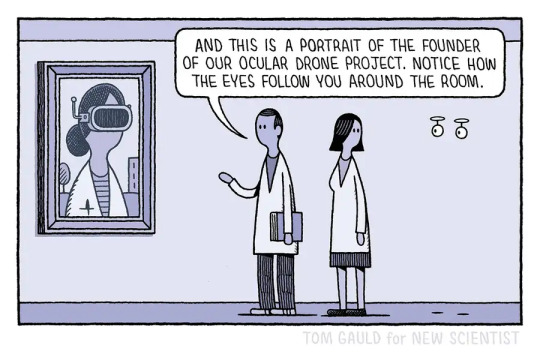
A recent cartoon for New Scientist
3K notes
·
View notes
Text
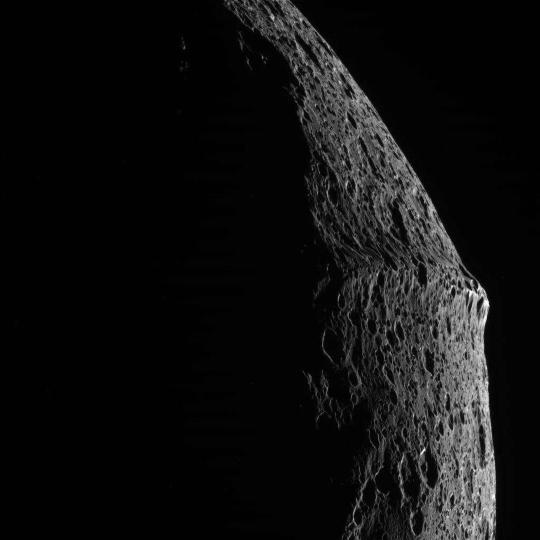


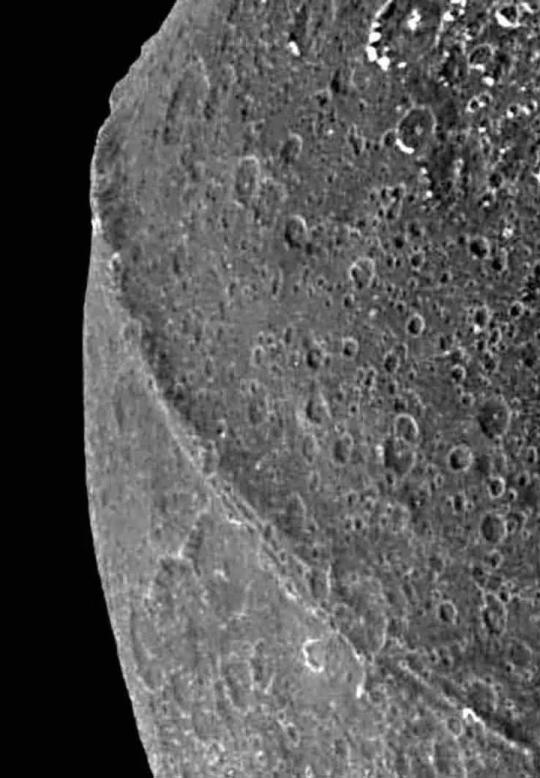

Here's a rare mind blowing moment in the astronomy world. Clearest images ever taken of Equatorial Ridge on Saturn's moon 'Iapetus'.
#saturn planet#saturn#planets#planet#astronomers#astrography#astrophysics#astrophotography#astrology#astronomy#astro observations#astro notes#space station#space science#space exploration#outer space#space#hubble space telescope#james webb space technology#nasa#universe#nasa photos#nasawebb#cosmos#space photography#our universe#telescope#nasa picture of the day#solar system
3K notes
·
View notes
Text
Eviction in the most comical way.


For the past two weeks eye have been trying to crowdfund for a new pair of strong prescription glasses. Because mine are broken.
CA: $HushEmu
Goal: $1275
In that interval I was fired due to “job abandonment” for calling off of work, because I cannot legally drive nor can I see. Now I am facing possible eviction with a very aggressive and hostile landlord.
Proof
THEY tried to evict me despite paying. Just because it didn’t “reflect” on their system on time.

Proof of my broken glasses




I’m still trying to raise $275 for my prescription glasses while trying to raise rent because I am now unemployed.
I am asking to stay housed! :/
If you can’t help financially please advocate for me.
• c+p on my behalf on various platforms
• If you mutuals with large following ask if they can share.
pls help. I’m just a girl.
#lesbian#sapphic#wlw#game changer#the bad batch#taylor swift#ttpd#lana del rey#artificial intelligence#astronomy#blackpink#character design#computer science#forest#one piece#podcast#programming#sports#technology#ts4#Spotify
1K notes
·
View notes
Text

🐸🚨New Frog Just Dropped!🚨🐸
Meet the ✨Most Beautiful Tree Frog✨, Guibemantis pulcherrimus, a new species described by my colleagues and me in the journal Zootaxa this week. The scientific name 'pulcherrimus' literally means 'most beautiful'. It's a close relative of Guibemantis pulcher (just 'beautiful', ha!), but has more little spots and less pronounced lateral blotches. It's found in the northeast of Madagascar, where it lives in Pandanus screw-palms.
#zoology#science#animals#beautiful#frogs#Guibemantis#Guibemantis pulcherrimus#the most beautiful frog#like if you agree#reblog if you disagree#save as PDF and email to your grandmother to share the good news#fax to your nearest Bureau of Outdated Technology to make sure they don't miss out
7K notes
·
View notes
Text

HBO84
#cyberpunk#hbo#pop art#scifi#art#technology#dystopian#1984#retrofuture#cyber#retro computing#scifi art#postinternet#popart#science fiction#contemporary art#digital art#retro#satire#1000
1K notes
·
View notes
Text

3K notes
·
View notes
Text

Why do sometimes really weird & unexplainable things kind of happen?
Looking at the Theoretical Intersection between Anatomy & Physiology & Electronics
***This is coming from the perspective of attempting to explain (in the most simple ways possible) how foreign advanced technology possibly “hacks” the foundations of organic life. ***
Our bodies are composed of nerves. When electricity goes from one nerve and travels to another nerve then an action occurs. When something in our environment is sensed (like hearing a noise) our organs are able to sense the information & produce electricity to carry that information back to the brain to be processed.
Anatomically we have the brain, the spinal cord, our sensory organs, cranial nerves, and “all the other individually named nerves” that branch off of those.
(There is further differentiation between central nervous system, peripheral nervous system, & autonomic, and other ways to differentiate in anatomy and physiology, but for simplicity this is how I will refer to it).
Cranial nerves are differentiated out on the list in comparison to “other nerves” because they are a specific list of major nerves that do very important & essential functions in the body.
So, nerves act as a path for electricity to follow. This electricity can produce voluntary action or involuntary actions.
Choosing to raise your hand we consider voluntary action produced by the nervous system. When something occurs without your conscious choice & occurs automatically, it is considered an involuntary action of the nervous system. For example, your heart beating would be an involuntary action.
Nerves have gaps between them & in this space neurotransmitters are released. Neurotransmitters are chemicals with the ability to cause another nerve to have an action. Neurotransmitters have different actions at different places in the body. After neurotransmitters are released they stay in this space until they are broken down by the body. The body breaks down the neurotransmitters and attempts to recycle the components to be used to make other things in the body.
Our bodies are able to use electricity because of many processes, but one major one is because we store electrolytes. Our organs and tissues use electrolytes like Sodium and Potassium to create electrical charge. This “electrical spark” causes electricity to generate so that it can be conducted through the nerves.
The human body is very complex & requires more than just electricity to function due to many components of its design, but each neuron as an individual unit is incredibly similar functionally to wires bundled into computer cables.
How does this process intersect with technology?
If someone were to attempt to hurt you with insidiously with technology it could create A LOT of very weird experiences.
If you know how to electrically stimulate parts of the body, like if you put an electrical stimulator/microchip/or another component that alters electricity in someone’s nervous system you could do a lot of weird things that people with no medical background would struggle to explain.
Machinery causing electrical impulses or “shocks” to be sent to certain part of the brain can produce many effects.
If someone sent electrical impulses down the cranial nerves it would produce a wide range of effects.
If certain cranial nerves were stimulated by someone controlling a technological component then someone could cause your body to involuntarily do the following by stimulating one of the 12 cranial nerves with electricity:
Involuntarily, as if your body moved on its own, you could feel the following:
> Your eyes to move in a certain direction, like your eyes are “locking on” to an object. Similar to how a computer program is able to “lock on” to a target
> Cause your vocal cords to move even when your mouth isn’t open
>Jaw movement & other motions of the face
>cause vertigo/dizziness/altered proprioception or your sense of orientation in space. So a lot of the symptoms of being inebriated
>control of your tongue muscles
> ***Vagus nerve or cranial nerve 10 does a lot, tampering with it could do a lot of weird things *** Possibly weird respiratory and/or internal organ symptoms like shortness of breath, changes in swallowing like dysphagia, vocal hoarseness, & many other possible and serious side effects
> Specific neck movements & turns of the head
You could also produce the sensations in someone of:
>hearing voices that aren’t there or altered processing, they talk but it’s like you can’t understand
>hearing sounds that aren’t there or altered hearing
>seeing images that aren’t there or altered sight
>smelling things that aren’t there or altered smell
>feeling things that aren’t there or altered feeling
>tasting things that aren’t there or altered taste
All of these actions and the degree to which you could “control it” would vary. Some of these are more technically complex to do, but at the most basic level “micromovements” from even just these few nerves are highly likely.
Our bodies have more than just electricity that contribute to our ability to do voluntary control as a defensive system to prevent these types of tampering events from occurring, but I think on a basic level it would still be possible to do some of these micromovements.
Without a lot of technological advancement required, the most worrying to me is a combination of seizures (which can occur when you just overload something with electricity) and/or lots of trauma producing something similar to disassociation & making people hear voices. It unfortunately often produces a mind control like feeling where other people attempt to control and/or influence your behavior.
I think in the quest for mind control, some very bad people use these types of things to hurt other people & technological advancements in subliminal messaging have greatly hurt the world through our time.
In order to fix things I think we must first understand them.
661 notes
·
View notes
Text

This photo contains both flight (flat in the foreground) and qualification assembly (upright in the background) versions of the Solar Array Sun Shield for NASA’s Nancy Grace Roman Space Telescope. These panels will both shade the mission’s instruments and power the observatory.
Double Vision: Why Do Spacecraft Have Twin Parts?
Seeing double? You’re looking at our Nancy Grace Roman Space Telescope’s Solar Array Sun Shield laying flat in pieces in the foreground, and its test version connected and standing upright in the back. The Sun shield will do exactly what it sounds like –– shade the observatory –– and also collect sunlight for energy to power Roman.
These solar panels are twins, just like several of Roman’s other major components. Only one set will actually fly in space as part of the Roman spacecraft…so why do we need two?
Sometimes engineers do major tests to simulate launch and space conditions on a spare. That way, they don’t risk damaging the one that will go on the observatory. It also saves time because the team can do all the testing on the spare while building up the flight version. In the Sun shield’s case, that means fitting the flight version with solar cells and eventually getting the panels integrated onto the spacecraft.
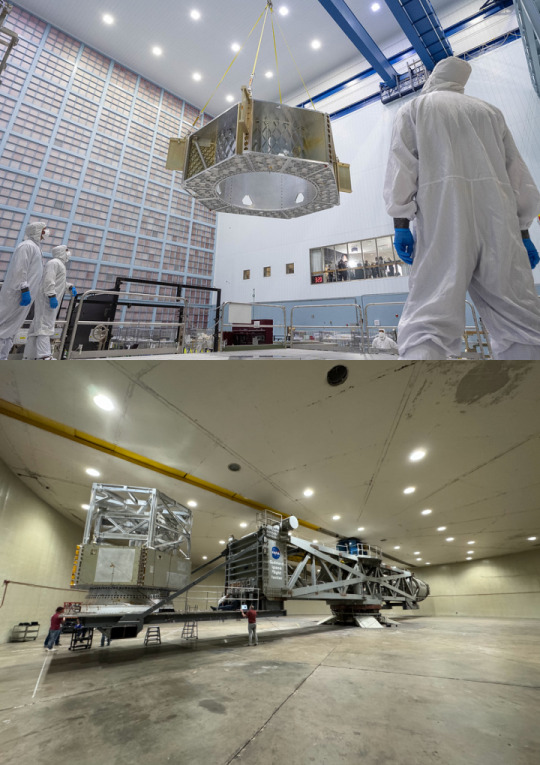
Our Nancy Grace Roman Space Telescope's primary structure (also called the spacecraft bus) moves into the big clean room at our Goddard Space Flight Center (top). While engineers integrate other components onto the spacecraft bus in the clean room, the engineering test unit (also called the structural verification unit) undergoes testing in the centrifuge at Goddard. The centrifuge spins space hardware to ensure it will hold up against the forces of launch.
Engineers at our Goddard Space Flight Center recently tested the Solar Array Sun Shield qualification assembly in a thermal vacuum chamber, which simulates the hot and cold temperatures and low-pressure environment that the panels will experience in space. And since the panels will be stowed for launch, the team practiced deploying them in space-like conditions. They passed all the tests with flying colors!
The qualification panels will soon pass the testing baton to the flight version. After the flight Solar Array Sun Shield is installed on the Roman spacecraft, the whole spacecraft will go through lots of testing to ensure it will hold up during launch and perform as expected in space.
For more information about the Roman Space Telescope, visit: www.nasa.gov/roman. You can also virtually tour an interactive version of the telescope here.
Make sure to follow us on Tumblr for your regular dose of space!
#NASA#astronomy#telescope#Roman Space Telescope#technology#space#science#tech#twins#engineering#STEM
1K notes
·
View notes
Text


Repo Man (1984)
#repo man#cult classic#science fiction#graphics design#retro computing#retro tech#old tech#1980s#80s#80s tech#scifi aesthetic#80s aesthetic#80s movies#80s films#eavesdropping#old technology#telecommunications
721 notes
·
View notes
Text
"When a severe water shortage hit the Indian city of Kozhikode in the state of Kerala, a group of engineers turned to science fiction to keep the taps running.
Like everyone else in the city, engineering student Swapnil Shrivastav received a ration of two buckets of water a day collected from India’s arsenal of small water towers.
It was a ‘watershed’ moment for Shrivastav, who according to the BBC had won a student competition four years earlier on the subject of tackling water scarcity, and armed with a hypothetical template from the original Star Wars films, Shrivastav and two partners set to work harvesting water from the humid air.
“One element of inspiration was from Star Wars where there’s an air-to-water device. I thought why don’t we give it a try? It was more of a curiosity project,” he told the BBC.
According to ‘Wookiepedia’ a ‘moisture vaporator’ is a device used on moisture farms to capture water from a dry planet’s atmosphere, like Tatooine, where protagonist Luke Skywalker grew up.
This fictional device functions according to Star Wars lore by coaxing moisture from the air by means of refrigerated condensers, which generate low-energy ionization fields. Captured water is then pumped or gravity-directed into a storage cistern that adjusts its pH levels. Vaporators are capable of collecting 1.5 liters of water per day.

Pictured: Moisture vaporators on the largely abandoned Star Wars film set of Mos Espa, in Tunisia
If science fiction authors could come up with the particulars of such a device, Shrivastav must have felt his had a good chance of succeeding. He and colleagues Govinda Balaji and Venkatesh Raja founded Uravu Labs, a Bangalore-based startup in 2019.
Their initial offering is a machine that converts air to water using a liquid desiccant. Absorbing moisture from the air, sunlight or renewable energy heats the desiccant to around 100°F which releases the captured moisture into a chamber where it’s condensed into drinking water.
The whole process takes 12 hours but can produce a staggering 2,000 liters, or about 500 gallons of drinking-quality water per day. [Note: that IS staggering! That's huge!!] Uravu has since had to adjust course due to the cost of manufacturing and running the machines—it’s just too high for civic use with current materials technology.
“We had to shift to commercial consumption applications as they were ready to pay us and it’s a sustainability driver for them,” Shrivastav explained. This pivot has so far been enough to keep the start-up afloat, and they produce water for 40 different hospitality clients.
Looking ahead, Shrivastav, Raja, and Balaji are planning to investigate whether the desiccant can be made more efficient; can it work at a lower temperature to reduce running costs, or is there another material altogether that might prove more cost-effective?
They’re also looking at running their device attached to data centers in a pilot project that would see them utilize the waste heat coming off the centers to heat the desiccant."
-via Good News Network, May 30, 2024
#water#india#kerala#Kozhikode#science and technology#clean water#water access#drinking water#drought#climate change#climate crisis#climate action#climate adaptation#green tech#sustainability#water shortage#good news#hope#star wars#tatooine
1K notes
·
View notes